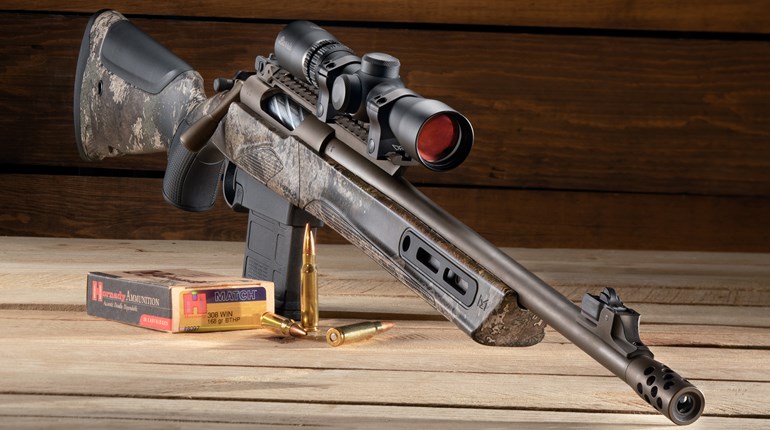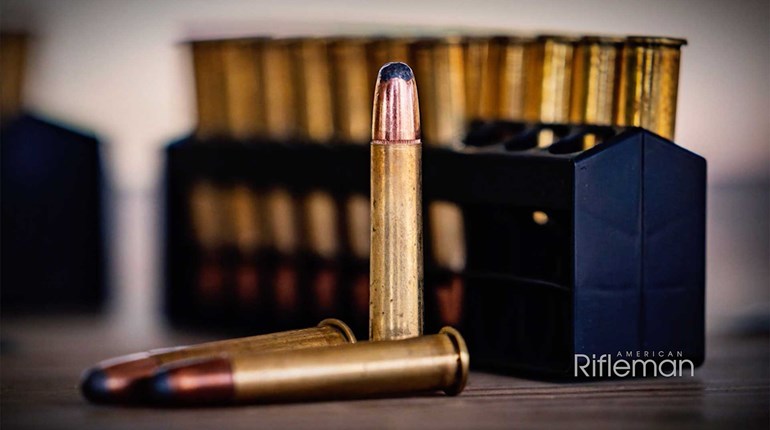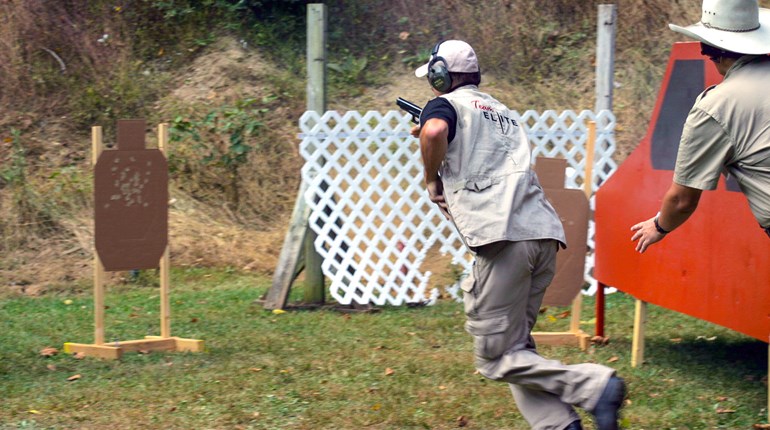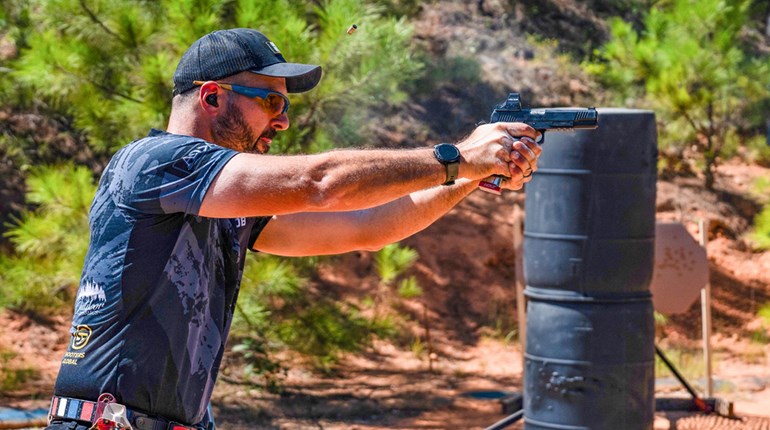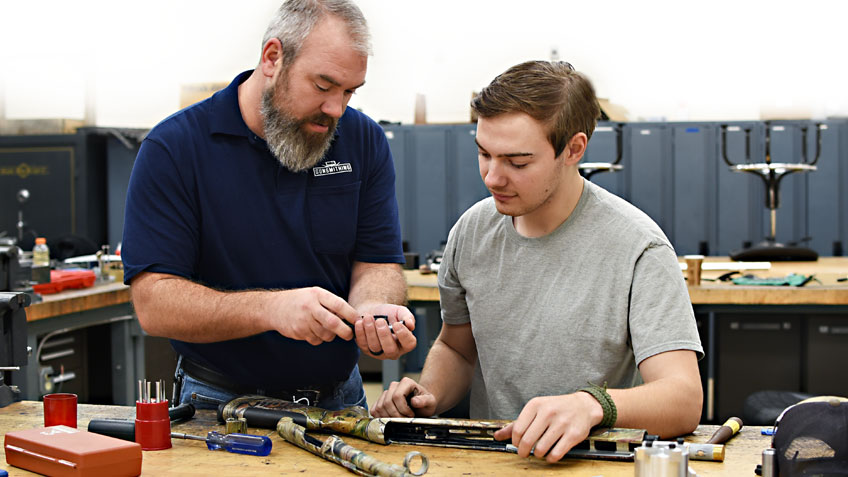
Many years ago, I decided to liberate a .22 LR rifle that hadn’t seen recent use and was occupying needed storage space. While detail cleaning it prior to a sale, I discovered something that was both amusing and horrifying: One of the internal trigger-group parts had been damaged and repaired with a thin strip of duct tape. I immediately realized the culprit was a teenage version of me, as I’d purchased the rifle new and had already developed a penchant for stripping my firearms down to raw components by that time. I somehow managed to break a chunk off one rather critical part and in my impatience to get it running, had built it back up with tape—and then I promptly forgot about it. Somehow the handy little carbine had chewed through a few thousand rounds over the intervening years without reminding me of my poor technique and decision-making abilities.
I also discovered that I had the replacement part the whole time. Apparently, I used the exploded parts diagram in the owner’s manual to order a new component right after doing the damage. Thankfully, I discovered the issue and repaired the rifle properly before passing it on to a new owner. Incidentally, I kept the taped part to use as an exhibit in my ever-expanding museum of personal stupidity. This early attempt to “fix” one of my guns happened long before I discovered that such a thing as formal gunsmith training existed, and many years before the advent of fingertip-accessible, DIY resources. I worked blindly and in hindsight, very foolishly. Tearing guns down to figure out their inner workings wasn’t the problem—I still do it regularly. But flying solo in the instructional void which existed in my world at that time could easily have resulted in disaster.
The modern landscape is vastly different, in both positive and negative ways. Just like nearly every other “How To” topic under the sun, file-sharing sites are full of videos showing various techniques for repairing, modifying and building many common firearms. Quite often, such videos are useful and well-intentioned, and the simpler tasks can generally be counted on as accurately portrayed. However, these fora have two notable weaknesses. First, they seldom have any mechanism in place which would allow for real-time interaction between viewers and presenters, which is important for anyone trying to master a new skill. But, more importantly, the advice and techniques demonstrated on these sites are not always the best or safest ways to perform a given job, particularly when it comes to complex or critical component work. I regularly repair firearms with problems induced by owners’ attempts to make modifications according to online video or forum guidance, allowing me to see the results of this problem first hand. Therefore, you must weigh the value of freely available advice from an unknown source against the chances that said instruction isn’t all that good to begin with.
Fortunately, shooters who aspire to learn how to properly modify or repair firearms have several professional options from which to learn today. Most of these resources are heavy on instructor interaction and all draw their material from experienced, professional gunsmiths and craftsmen. Whether you seek to learn a single skill or are interested in a career-oriented, full program of study, numerous avenues are available for increasing your ’smithy knowledge. The most trustworthy sources fall into one of three categories: long-term collegiate programs, mid-length certification courses and NRA-affiliated, short-term gunsmithing classes.

Long Action
As of the time of this writing, firearm enthusiasts who wish to obtain an Associate of Applied Sciences (AAS) degree in Gunsmithing have at least seven colleges from which to choose. It is important to note that not all schools have the same levels of staffing, equipment and experience with their programs, so look closely at a given program’s course specifics to ensure they meet your needs. Three schools are particularly well known for their robust and in-depth AAS-Gunsmithing programs: Montgomery Community College (Troy, NC), Murray State College (Tishomingo, OK) and Trinidad State Junior College (Trinidad, CO).

These 2-(plus) year resident programs dive deeply into all key facets of gunsmithing. A quick look at the relevant curricula reveals courses covering repair work on all common firearm types, metal and stock work, machining, welding, refinishing and business practices for gunsmiths and Federal Firearms Licensees. These are not introductory classes. Rather, they are in-depth, hands-on studies that require mastery of each process (in the form of finished products) to advance.
While the desire to run one’s own business is often a motivator for such schooling, a wide variety of job opportunities exist within the firearm industry for students who put in the time and effort to earn a gunsmithing degree. Graduates tend to be highly sought after for employment due to the quality of their schooling. Since these degrees are offered by fully accredited schools, veterans should be able to apply GI Bill benefits in an AAS-Gunsmithing program.
Another 2-year program worth looking into is the Pennsylvania Gunsmith School’s Master Gunsmith Program. This Pittsburgh-area school does not offer singular courses, but rather a detailed curriculum that ends with a diploma and a foundation of knowledge that is heavy on traditional gunsmithing skills. Montgomery Community College offers an additional Associates Degree in Hunting and Shooting Sports Management. This unique course of study can be taken completely online or as a hybrid classroom/online course. It is geared toward preparing students for various careers within the firearm industry and is often used to augment formal gunsmith training.

Medium Taper
If spending a couple years in school doesn’t fit your plans, the next rung down the learning ladder is to pursue a gunsmith-specific certification. Most of these programs exist at brick-and-mortar colleges and often count for credit toward a degree, where one is offered. Course offerings vary by school, but they typically consist of relevant classes which are spread over two or more semesters. In most cases, the curricula used for certifications and diplomas are taken directly from the longer, 2-year AAS degree programs. Successful completion yields skills and qualifications that are very useful for work in various parts of the firearm industry.
Whether due to time, cost, location or other life demands, residential classroom study is not feasible for everyone. Several organizations have stepped up to offer
distance-learning solutions to gunsmith training. Two of the better-known examples are the American Gunsmithing Institute (AGI) and Penn Foster Career School. AGI offers a three-tiered system that relies on course-specific DVDs. It also provides basic tooling with each of its tier packages. Penn Foster’s robust Gunsmith Training Program is divided into 50 internet-based training videos. Its curriculum begins with general firearm-industry business lessons and then transitions to specific work on rifles, sights, handguns, shotguns, muzzleloaders, ammunition, metalwork and firearm finishes. Distance-learning programs are self-paced and costs are relatively low when compared with longer-term, resident courses. Both Penn Foster and AGI have programs which qualify for some form of veterans’ education benefits: either vocational rehabilitation training through the VA, the GI Bill or both.

Short Cycle
A hybrid training route exists for potential gun mechanics who have less time and/or money available than required by the other options. NRA-approved, short-term gunsmithing courses taken through an affiliated school are a very efficient way to learn specific skill-sets. The fact that these classes are conducted in professional settings, for low cost and within short time spans, makes them practical and attractive options. Currently, four of the degree-granting colleges offer such courses: Lassen Community College, Montgomery Community College (MCC), Murray State College and Trinidad State Junior College.
The specific course offerings and structures vary, but classes are scheduled during spring and summer and typically last from a few days to 2 weeks each. Basic machining operations, applying custom finishes and repair or modification of various handgun, rifle and shotgun platforms are common course offerings. NRA short-term classes use each school’s regular gunsmithing facilities and equipment and often receive generous instructional or material support from companies like Brownells and Midway USA. Classes are taught by each school’s instructors, as well as by master craftsmen who are well-known within the custom gunsmithing world. These classes tend to fill early, so it pays to keep an eye on a particular school’s current-year schedule as soon as it’s published. Course content tends to follow trends and although traditional gunsmith tasks are frequently offered, the hot topics these days often revolve around work on popular handguns, MSRs, bolt-actions, reloading and even basic shooting instruction.
NRA short-term courses are where I have the most experience, having attended classes at MCC a little more than a decade ago. The type of custom-firearm manufacturing I do today was not part of the short-term curriculum at that time, so my classes focused on machining operations, applying finishes and precision bolt-action rifle work. Even so, I lean heavily on skills learned during each of those courses in my shop today. Because I serve on its Gunsmith Advisory Committee, I’ve been able to stay abreast of MCC’s program and watch it grow over the years. This school is a great representation of those institutions that have been training highly qualified and supremely competent gunsmiths long before it was considered a fashionable trade.
Field of View
Several things stood out when I walked into my first gunsmithing class. The first was how well-equipped the various shops were with state-of-the-art machinery. While traditional desk and chair classrooms are present, most course work is performed in multi-bench shops where students watch, learn and do as instructors demonstrate and circulate as needed. The second thing that struck me was how diverse students’ backgrounds were. Some were habitual attendees who had traveled from around the country to attend a 1-week class. Others were there to learn a skill needed for their personal gun work. The rest of us showed up to gain knowledge in pursuit of a career that related to some facet of gunsmithing.
But, the most significant thing that quickly became obvious was how professional and knowledgeable the instructors were. None of the “I got mine back when it was hard” attitude was in evidence. Instead, my instructors were there to pass on what they learned throughout their own highly successful, professional gunsmithing careers. I’ve interacted with many people who have attended gunsmithing courses, and their praise and observations echoed my own. These courses are designed to teach you a basic skill upon which to build as you gain experience later. The schools that host such classes constantly strive to be flexible to meet emerging student needs. For example, MCC recently shifted some of its short-term NRA courses to run over weekends to help students manage busy life schedules.
Whether your goal is to learn how to better care for, repair and modify your own firearms or you seek a hands-on career in some part of the firearm industry, there’s an educational path available to help you succeed. Don’t get spooked by the idea of going back to school or taking time away from other work. As a full-time, 51-year-old college
student, I’m living proof that you’re never too old to go back to the books. The fact that I’m in school while continuing to run a thriving, full-time business, is further evidence that it’s possible to achieve a balance between a normally busy life and continuing education. You can elect to go the self-paced, distance-learning route or attend one of the traditional, well-equipped and expertly staffed gunsmithing schools. Either way, what you gain from the experience will far outweigh the effort you put into it.













